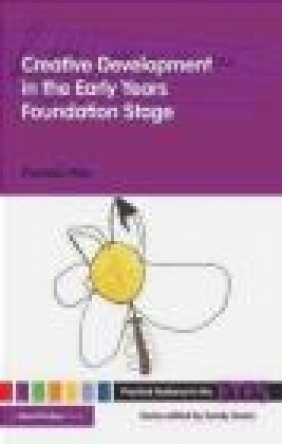Creative Development in the Early Years Foundation Stage
Pamela May, Sandy Green
Creative Development in the Early Years Foundation Stage
Pamela May, Sandy Green
- Producent: Routledge
- Rok produkcji: 2008
- ISBN: 9780415476539
- Ilość stron: 144
- Oprawa: Miękka
Niedostępna
Opis: Creative Development in the Early Years Foundation Stage - Pamela May, Sandy Green
"The Practical Guidance in the Early Years Foundation Stage" series will assist practitioners in the smooth and successful implementation of the Early Years Foundation Stage. Each book gives clear and detailed explanations of each aspect of Learning and Development and encourages readers to consider each area within its broadest context to expand and develop their own knowledge and good practice. Practical ideas and activities for all age groups are offered along with a wealth of expertise of how elements from the practice guidance can be implemented within all early years settings.The books include suggestions for the innovative use of everyday resources, popular books and stories. The clear and practical information in this book will help practitioners in supporting and developing the natural curiosity of children, helping them explore and express their own ideas through a variety of activities including music art and dance. The author explores the balance between the necessary freedoms of choice that creativity requires and the control which thoughtful practitioners must exert and offers ideas for building children's imaginations through play.ContentsAcknowledgementsIntroductionChapter 1 Creativity, a theoretical baseA definition of CreativityFive Conditions for CreativityWhy Creativity is importantThe Stages of CreativityThe Spiral CurriculumCreativity and PlayKey Aspects of PlayCreativity in the wider curriculumThe Adults' Role in Children's ActivityConclusionChapter 2 :Being Creative: responding to experiences, expressing and communicating ideasBirth to 11months: Use movement and sensory exploration to connect with their immediate environment8-20 months: Respond to what they see, hear, small, touch and feel16-26 months: Express themselves through physical action and sound16-26 months: Explore by repeating patterns of play22-36 months: Seek to make sense of what they see, hear, touch and feel30-50months: Use language and other forms of communication to share the things they create, or to indicate personal satisfaction or frustration40-60 months: Make comparisons and create new connectionsChapter Three: Exploring Media and MaterialsBirth to 11 months: Development matters: discover mark-making by chance, noticing, for instance, that trailing a finger through spilt juice changes it.8-20 months: Explore and experiment with a range of media using whole body16-26 months: Create and experiment with blocks, colours and marks22-36 months: Begin to combine movement, materials, media or marks30-50 months: Explore colour and begin to differentiate between colours40-60months: Explore what happens when they mix colours. Choose particular colours to use for a purposeChapter Four: Creating Music and DanceBirth-11months: Respond to a range of familiar sounds, for example, turning to a sound source such as a voice.8-20 months: Move their whole bodies to sounds they enjoy, such as music or a regular beat16-26 months: Begin to move to music, listen to or join in rhymes and songs22-36 months: Create sounds by banging, shaking, tapping or blowing30-50 months: Explore and learn how sounds can be changed30-60 months: Imitate and create movement in response to music40-60 months: Begin to build a repertoire of songs and dancesChapter five: Developing Imagination and Imaginative PlayBirth-11months: Smile with the pleasure of recognisable playthings8-20 months: Enjoy making noises or movements spontaneously18-26 months: Pretend that one object represents another, especially when objects have characteristics in common22-36 months: Begin to make-believe by pretending30-50 months: Notice what adults do, imitating what is observed and then doing it spontaneously when the adult is not there.Use available resources to create props to support role play.Develop a repertoire of actions by putting a sequence of movements together.40-60 months: Introduce a story-line or narrative into their play.Play alongside other children who are engaged in the same theme.Play cooperatively as part of a group to act out a narrative
Szczegóły: Creative Development in the Early Years Foundation Stage - Pamela May, Sandy Green
Tytuł: Creative Development in the Early Years Foundation Stage
Autor: Pamela May, Sandy Green
Producent: Routledge
ISBN: 9780415476539
Rok produkcji: 2008
Ilość stron: 144
Oprawa: Miękka
Waga: 0.23 kg






























